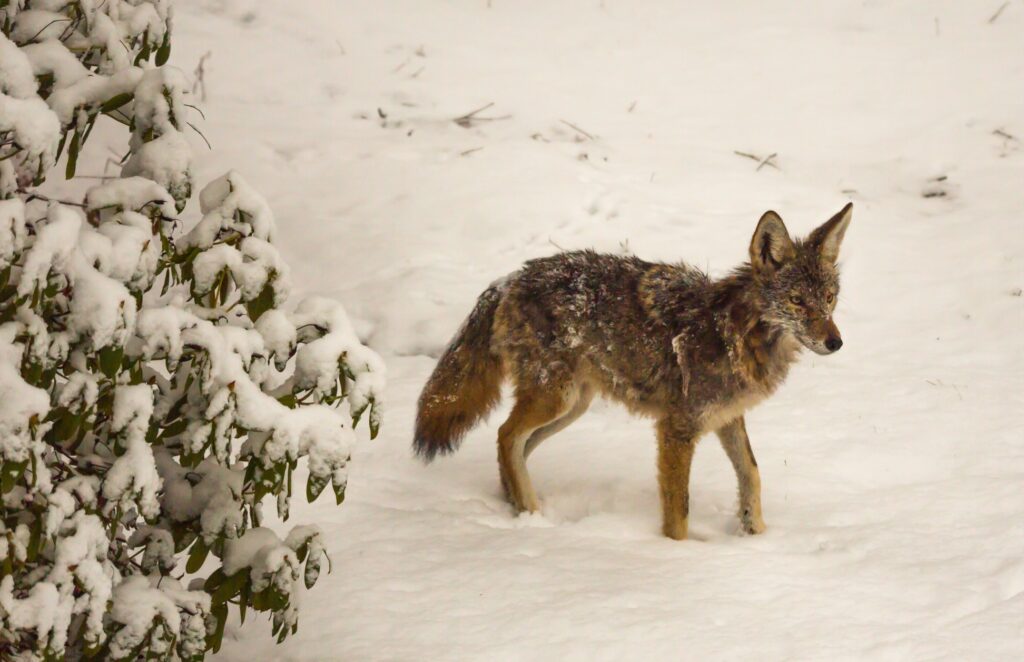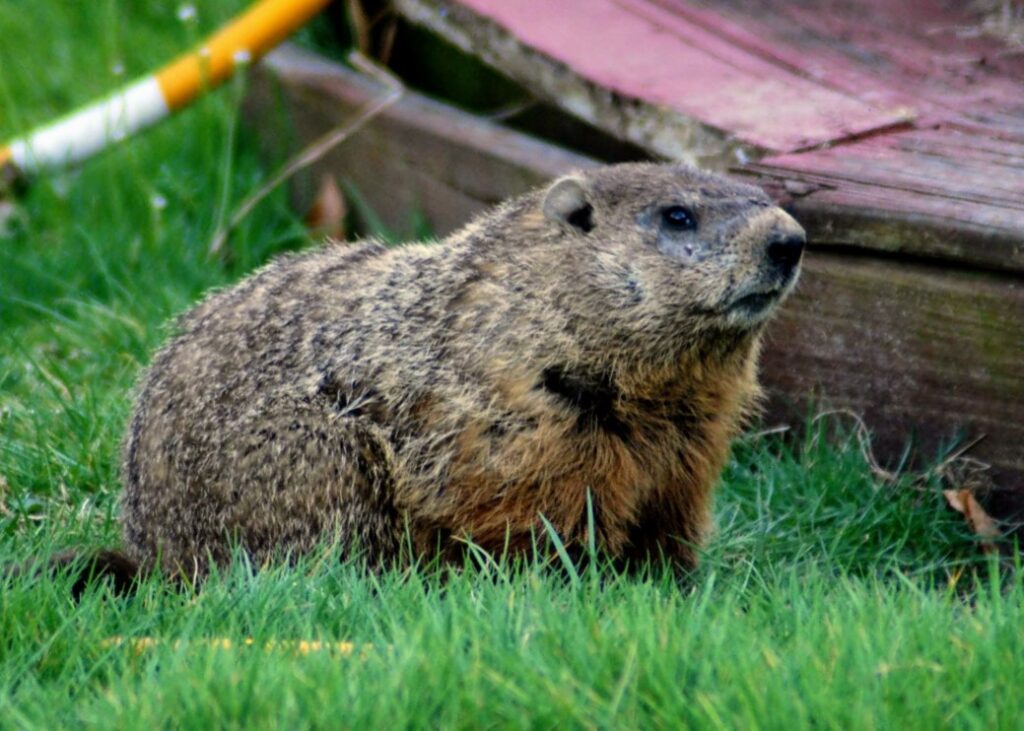 When Are Coyotes Most Active and Aggressive?
When Are Coyotes Most Active and Aggressive?
Coyotes have often been depicted as cunning, sly characters that are untrustworthy. Unfortunately, public perception of these wild animals has not changed much with the connotations of coyotes remaining largely negative. But is it justified?
Coyotes are a species of canine native to the United States where they naturally inhabit the vast areas of deserts, mountains, and forests. However, due to increased human expansion into their native habitats, coyotes have had to learn how to navigate these new suburban terrains. They are intelligent animals that know how to adapt to different environments with ease and skill. It has become common to spot coyotes in major cities, even being seen in New York City.
Unlike their close relatives, the wolf, coyotes are solitary animals but when hunting large prey, such as deer, they can choose to work as a pack. Coyotes are nocturnal animals (meaning they sleep in the day and are most active at night) that come out to hunt at night. Though, it is not uncommon to see them scavenging for food during daylight hours.
Are Coyotes More Active in Winter?
As winter closes in, coyotes become more active during the day in their search for food. They will also travel together more in the winter than they do in the summer months.
Despite what you would assume, coyotes are not purely carnivores but rather omnivores with 10% of their diet being made up from non-meat sources. They are unfussy animals that will happily eat a variety of things such as fish, frogs, rodents, and larger prey like deer. Snakes, grass, fruit, and insects are also on the menu.
However, when food sources are scarce, coyotes will happily turn to scavenging for any source of food in suburban and urban areas of cities and in small towns. They are known to get into garbage and dig in trash cans to pull out any leftovers.
What Month Do Coyotes Mate and Have Pups?
Coyotes start mating from mid-January. The breeding season for coyotes is in the spring months, peaking in late February and early March. The gestation period is 58 to 63 days on average. Spring marks the start for females to begin preparing their dens for new pups. A mom coyote awaits her pups to be born somewhere between mid-March to mid-May.
Are Coyotes More Dangerous During Their Mating Season?
Coyotes can become more dangerous during their breeding season as the males will want to protect their territory from other males. Also, female coyotes will protect their pups and make sure they are not seen by any predators, thus they can get dangerous in some circumstances.
During this time of year, coyotes will pose a major risk to smaller pets, and the risk increases even more during their mating season.
When Are Coyotes Most Aggressive?
As coyotes populations continue to expand at a steady rate, human encounters have become more frequent. Even with this, attacks on humans are rare and highly unlikely.
Like most wild animals, coyotes have no desire for conflict with humans. They would prefer to avoid us and get on with their lives interruption-free. They are of very little risk to you or your family if the right precautions are put in place. But coyotes are more of a risk to family pets than humans.
There are a few simple ways to avoid conflict with coyotes. Firstly, do not under any circumstances feed them. This leads to overconfidence in these animals as they lose their natural fear of humans. Even leaving garbage and pet food where coyotes can have easy access is considered feeding.
Next is to fence your yard and ensure that your pets are not roaming loose. While coyotes can jump fences, if they are built high enough they will deter the predators.
Final Words,
More and more coyotes have been observed living in developed areas and often, people are unknowingly in close contact with them each day. These wild animals are watching and learning from humans who influence their behavior. Coyotes also play a vital role in the ecosystem by providing a great deal of rodent control, and if we respect them, they will do the same in return.
One option that might be used as a compromise in lessening coyote conflicts with humans is to humanely trap them and then relocate them to a distant site.
If you need help to deter coyotes from your property, contact Westchester Wildlife. We are an experienced wildlife control company serving Westchester, Dutchess, Putnam Counties, NY, and Fairfield County, CT.
 Do Groundhogs Burrow Under a House and Can They Damage It?
Do Groundhogs Burrow Under a House and Can They Damage It?
Groundhogs, also known as woodchucks, are a large species of rodents. These wild animals are only found in North America, and can live as far south as Alabama and have lived as far north as Alaska.
They are referred to as “edge dwellers” and prefer to live in areas such as woodlands and forests in winter and fall, and in open fields, grasslands, and suburban backyards in summer and spring. It is rare that a groundhog will move more than 0.5 miles from its burrow.
However, as urbanization is affecting the natural habitats of wildlife, including groundhogs, these animals made our towns and cities their home. They are getting more adapted to urban settings, are less and less frightened of humans and keep burrowing even when humans are around.
Do Groundhogs Live in the Ground?
As the name would suggest, groundhogs live inside the ground. Their holes lead to the underground burrows that they call home. This is where they spend most of their time. Groundhogs use these tunnels as a place to stay safe from predators, and as an ideal place for hibernation and raising their kits.
Are Groundhogs Problematic?
Just like other rodents, the groundhog’s teeth never stop growing. Their two chisel-shaped, long incisors can grow up to 1/16th of an inch per week. To keep these teeth at a reasonable length, groundhogs need to consume a large volume of food to wear their teeth down.
However, this isn’t usually the main problem for homeowners. The primary nuisance concern in regards to groundhogs involves their tendency to dig.
Groundhogs have muscular bodies, powerful short legs, and sharp claws which enables them to dig deep burrows. They accomplish building their burrows extremely well, and this is why they are sometimes called the “underground architects”.
If you want to learn more about what exactly attracts groundhogs to your yard and what damage they can cause, check out our blog post.
What Do Groundhog Holes Look Like?
All groundhog burrows are laid out in practically the same way. Typically, these burrows will have one and sometimes two main entrances with up to six exits. These entrances look like large crescent-shaped mounds of excavated soil and dirt that’s placed right outside the entrance hole. A groundhog hole will appear roughly ten to twelve inches in diameter. The burrow also has one up to four secondary entrances.
The burrows can reach up to 50 feet in length but tend to be no deeper than 6 feet. When a groundhog starts building its burrow, it digs inward for several feet, and then it inclines the tunnel upward for a few more feet. After that, it will continue digging horizontally for another 15 to 25 feet.
These burrows are extensive, with numerous chambers used separately as a latrine as well as for sleeping, hibernating, and nesting.
Can Groundhogs Damage Your Property?
Groundhogs are definitely something that homeowners need to worry about. Their tunneling systems might lead to significant damage to your property.
These animals are able to dig and move a great amount of dirt, and when this activity happens near a house structure, for example under a concrete deck or a patio, the absence of supporting dirt might cause a vulnerable foundation that is prone to cracking.
They feel safe building homes under or around houses as the structure provides overhead stability for them. However, due to the tunneling nature of groundhog burrows, water damage and erosion can become a serious issue for the homeowner.
With rainy weather, these tunnels can fill with water and lead to water flowing directly underneath the house. This can lead to issues with the foundation, i.e. disruption of the existing water balance, and drainage problems during severe weather conditions.
You may find increased moisture in the basement which can, in turn, lead to mold developing throughout the building. The water-logged tunnels can cause the soil to become eroded, which may lead to the entire failure of the house’s foundation.
Due to their powerful teeth and big appetites, groundhogs can also do damage to crops and plants in your garden. For this reason, you may want to get rid of this wildlife before your garden gets destroyed.
Final Words,
Fortunately, there are ways that a homeowner can deter groundhogs from their property. The only thing that’s effective is to humanly trap and release the wildlife further away. DIY groundhog control methods are proven to not be working most of the time. Thus, your best option is to hire an experienced wildlife control company.
Contact Westchester Wildlife for more information on humane trapping and removal of groundhogs from your property. We offer our services in Westchester, Dutchess, Putnam Counties, NY, and in Fairfield County, CT.
